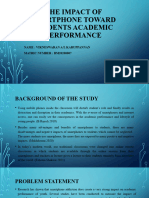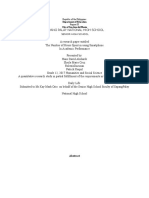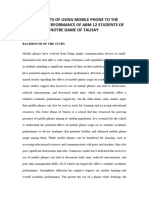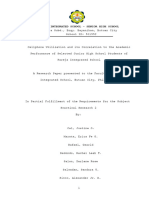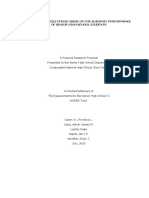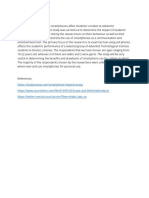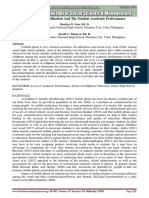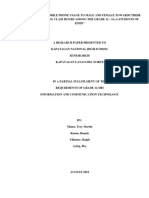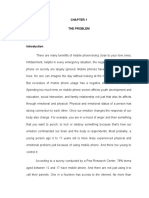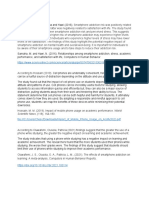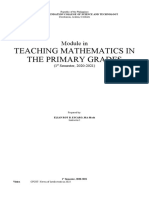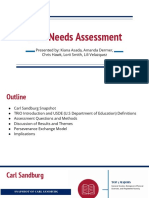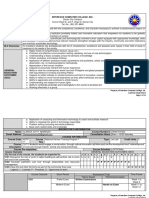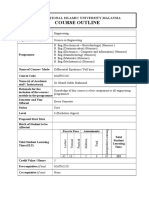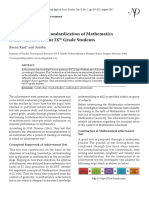Chapter IV
Research Findings
Research Question No.1. Did you use your smartphone 1 hour or most in any social media
platforms?
Smartphone User
Question 1
Question 2
Question 3
Question 4
In question number one, 17 out of 20 students answered that they used smartphone one
hour or most in any social media platforms. Therefore, the value of students who used their
smartphone anywhere around in Sapang Palay National High School is 18%.
A study done by Kabre and Brown (2007) on the influence of the facebook shows that
the number of hour spent on facebook influence both academic performance and the quality of
life among student.
Research QuestionNo.2. Do you think using smartphone can make your school works easier and
faster?
Smartphone User
Question 1
Question 2
Question 3
Question 4
� In question number two 17 out of every 20 students answered that using smartphone can
make easier and faster the school works such as assignments, projects and activities. Therefore,
the value of students who use theirsmartphone for academic performance is 18%.
According to (Flad, 2012) High school students use different sites as a tool to obtain
information and resources for their academic planning to enhance their artistic and so on.
Research Question No.3. Do you think using smartphone can affect your academic performance
in negative ways?
Smartphone User
Question 1
Question 2
Question 3
Question 4
In question number 3, 16 out of every 20 students answered that the smartphone can
affect their academic performance. The value of students obtained is 16%.
A study conducted in both Eastern and Western countries have indicated a negative
relationship between watching TV and educational achievement.
Research Question No.4. Do you affirmative if the smartphone only use in school instead
notebook and a pen?
Smartphone User
Question 1
Question 2
Question 3
Question 4
� In question number four, 2 out of 20 students answered that the smartphone is not
applicable for school tools like pencil, notebook and so on. Therefore the value of students is
2%.
Lin concluded on his study it provides first insights into smartphone use, smartphone
addiction, andpredictors of smartphone addiction in young people from a european country,
which should beextended further studies.
TableNo.1
Description of respondents in terms of General Average, Frequency, and Percentage
General Average Frequency Percentage
81 4 5%
82 3 4%
83 4 5%
84 6 8%
85 6 8%
86 8 10%
87 5 6%
88 7 9%
89 7 9%
90 1 1 14%
91 5 6%
92 5 6%
93 6 8%
94 1 2%
Total 80 100%
�In the illustration of the General average of the respondents , In the grade of90ithave a higher
number of countwhichis 14% compared tothe other grades.
According to Kipp Bentley (2012) The teachers and students use smart phone to be
� Chapter V
Conclusion and Recommendation
Summary of Finding
According to the research survey or interview, it probably show the intimate relationship
between smartphone and senior high school students for academic purposes in Sapang palay
National High School. They are neutral used or once in important things, such as assignments,
projects, reportings and other extra curricular activities that every school provides. The volume
of the students who answered that they are not agree to smartphone to become school tools or
only smartphone use for education instead notebooks and ballpen are 2% out of every 20
students.
Conclusion
Based on this research dissertation, the number of hours spent using smart phone
was dependable to the prior subjects. Eventually, there is no longer used. All subjects in
HUMSS Strand are commonly design for almost 1 hour only, because of that the academic
prior was not able to lead the student to use their smart phone while both of them are
running together.
The average students are not necessarily affected to their academic study by using
smart phone. However, smart phone is one of the most alternative helpful gadgets even
nowadays. There is a matter fact, that the some student in HUMSS strand were able to lead
their fellow.
� There have only 5 for every 20 students who have not literated to use their Smartphone
in terms of academic purposes. Therefore, Smartphone has allow the beholder to discipline
themselves for their functions as a student.
There have an average students who were so dependable in their smartphone. It would
recognize their satisfaction as a student. Meaning to say, they feel more comfortable to
communicate with their fellow students to provide or to share their thoughts such as
ideologies, knowledges and emotions.
Recommendation
The researchers recommend this study to the students that who use a smart phones
and not , to know the difference between the two variables when it comes to their academic
performances. The researchers recommend this study also to those who find our study
interesting and continue it with the researcher’s acknowledgement. This research also does
not have more information regarding the local research; the researchers want to imply to search
more to know the other studies that are similar to this study.
�Bibliography
Anderson, C. &. (n.d.). Video games and aggressive thoughts, feelings, and behavior in the
laboratory and in life. Journal of Personality and Social Psychology , 78, 772–790.
Carvin and Ogedebe. (2006,2012). JMEST. Retrieved from Smartphone.
Carvin, A. (2006). New government report exposes the school-home digital divide. Retrieved 10
7, 2017, from Learning now: http://
www.pbs.org/teachers/learning.now/2006/09/new_report_exposes_the
Flad, K. (. (2012, 8 26). The influence of social networking participation on student academic
performance across gender lines. Retrieved 10 7, 2017, from
http://www.digitalcommons.brockport. edu/edc_theses/31/
Newman. (2010). The role of social media. Retrieved from
https://www.journalism.co.uk/news/study-the-smartphone-is-the defining-device-in-digital-
news/s2/a565484
Ogedebe, P. M. (2012, 8 26). A case study of university of Maiduguri. Retrieved from Internet
usage and students’ academic performance in Nigeria tertiary institutions: http://
www.savap.org.pk/journals/ARInt./Vol.2(3)/2012(2.3-41).pdf
Sato, J. (2015). Mobile device use and overuse. Retrieved from mobileshop:
http://www.mobileshop.eu/blog/interesting/mobile-device-use-overuse
Sean Gowran. (2017). Number of smartphone users in the Philippines from 2015 to 2021.
Retrieved from Statistic: http://cnnphilippine.com/business/2016/07/12/smartphone-users-90-
million-in-five-years.html
Strasburger, V. &. (2012). Retrieved from Children, adolescents, and the media. Thousand Oaks,
CA: Sage.
Tao, Y. &. (2013). Transforming the personal response system to a cloud voting service. In S.
Uesugi (Ed.), Verlag, Austria: Springer. IT enabled services , 139-156.
Times, M. (2015). overuse of mobl=ile gadgets hamper students ability to study and sleep.
Retrieved from manilatimes: http:www.manilatimes.net/overuse-of-mobile-gadgets-hampers-
students-ability-to-study-and-sleep/181132
Tindell, D. R. (2012). The use and abuse of cell phones and text messaging in the classroom.


